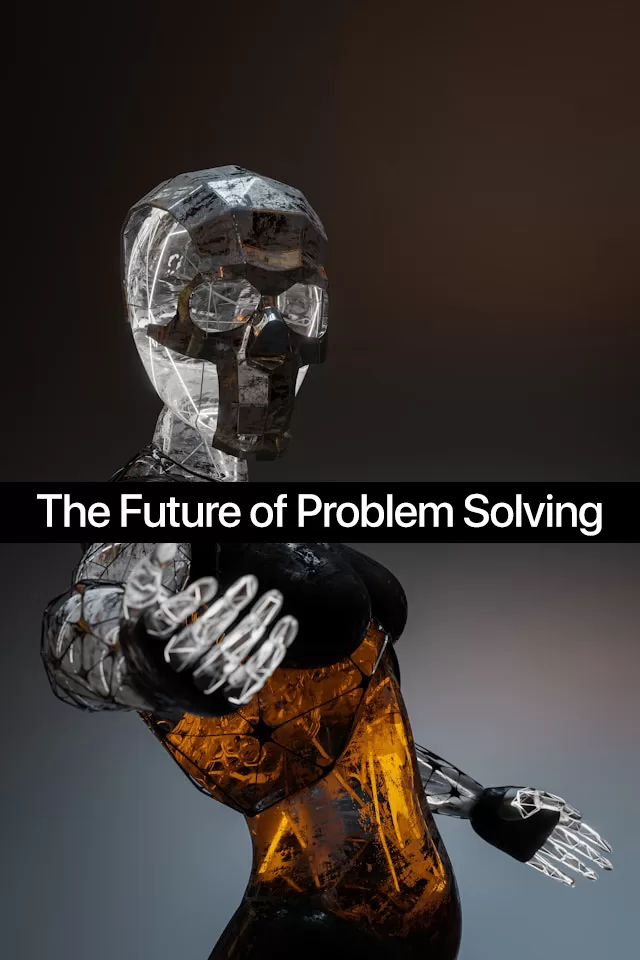The art of problem-solving has been at the heart of human evolution and progress. As societies and technologies continue to advance, so does the way we approach and solve problems.
We now stand on the brink of a new era where the fusion of artificial intelligence (AI), data science, and human creativity is set to reshape the future of problem-solving.
This article delves into the evolution of decision-making and explores what the future holds for problem-solving.
Table of Contents
The Evolution of Problem-Solving
Traditionally, problem-solving has been a human-centric activity, relying on our cognitive abilities, experiences, and instincts.
Over time, we’ve developed systematic approaches to problem-solving, incorporating critical thinking, creative ideation, and data analysis.
With the advent of computers and later, the internet, we’ve been able to automate some problem-solving processes, particularly those involving data processing and pattern recognition.
These technological advances have revolutionized problem-solving in areas such as logistics, healthcare, finance, and beyond.
The Future of Problem Solving
As we look towards the future, three major trends stand out in the evolution of problem-solving:
- Artificial Intelligence and Machine Learning: AI and machine learning technologies are rapidly evolving to solve complex problems. From predicting consumer behavior to diagnosing medical conditions, these tools are transforming decision-making across various fields. As these technologies continue to evolve, we’ll see more sophisticated problem-solving solutions that can analyze vast datasets, identify patterns, and make accurate predictions.
- Human-Machine Collaboration: While AI has immense problem-solving potential, human intuition, creativity, and ethical judgment remain crucial. The future of problem-solving lies in effective human-machine collaboration, where AI supports human decision-making, and humans guide AI actions based on ethical considerations and creative insights.
- Data-Driven Decisions: As we generate more data, its role in problem-solving becomes increasingly significant. Advanced data analytics can offer insights and trends that aid in decision-making. In the future, the ability to interpret and apply data will become even more crucial in problem-solving.
- Immersive Technologies: Virtual Reality (VR) and Augmented Reality (AR) hold great promise for problem-solving. Whether it’s creating virtual simulations to solve engineering problems, or using AR overlays to assist with complex surgical procedures, immersive technologies will significantly enhance our problem-solving capabilities.
- Democratization of Problem-Solving Tools: Advanced problem-solving tools are becoming more accessible. This trend of democratization allows a wider audience to leverage these tools, leading to diverse problem-solving approaches and greater innovation.

Enhancing Future Problem-Solving Skills
As the landscape of problem-solving evolves, so must our skills. Future problem-solvers will need to:
- Understand AI and Machine Learning: Basic knowledge of AI and machine learning will be essential, even for non-tech professionals.
- Develop Data Literacy: The ability to interpret and apply data will be a key skill in the data-driven future.
- Cultivate Creativity and Ethics: Despite technological advancements, human creativity, intuition, and ethical judgment will remain vital in problem-solving.
- Learn to Collaborate with AI: Future professionals need to effectively collaborate with AI, harnessing its analytical prowess while providing essential human oversight.
Conclusion
The evolution of decision-making promises a future where problem-solving is not just faster and more efficient, but also more creative and ethical.
As AI and humans join forces, data informs decisions, and immersive technologies reshape problem-solving dynamics, we stand on the brink of an exciting new era.
As we navigate this future, equipping ourselves with the necessary skills will be crucial to leverage these advancements and continue our problem-solving evolution.


0 Comments